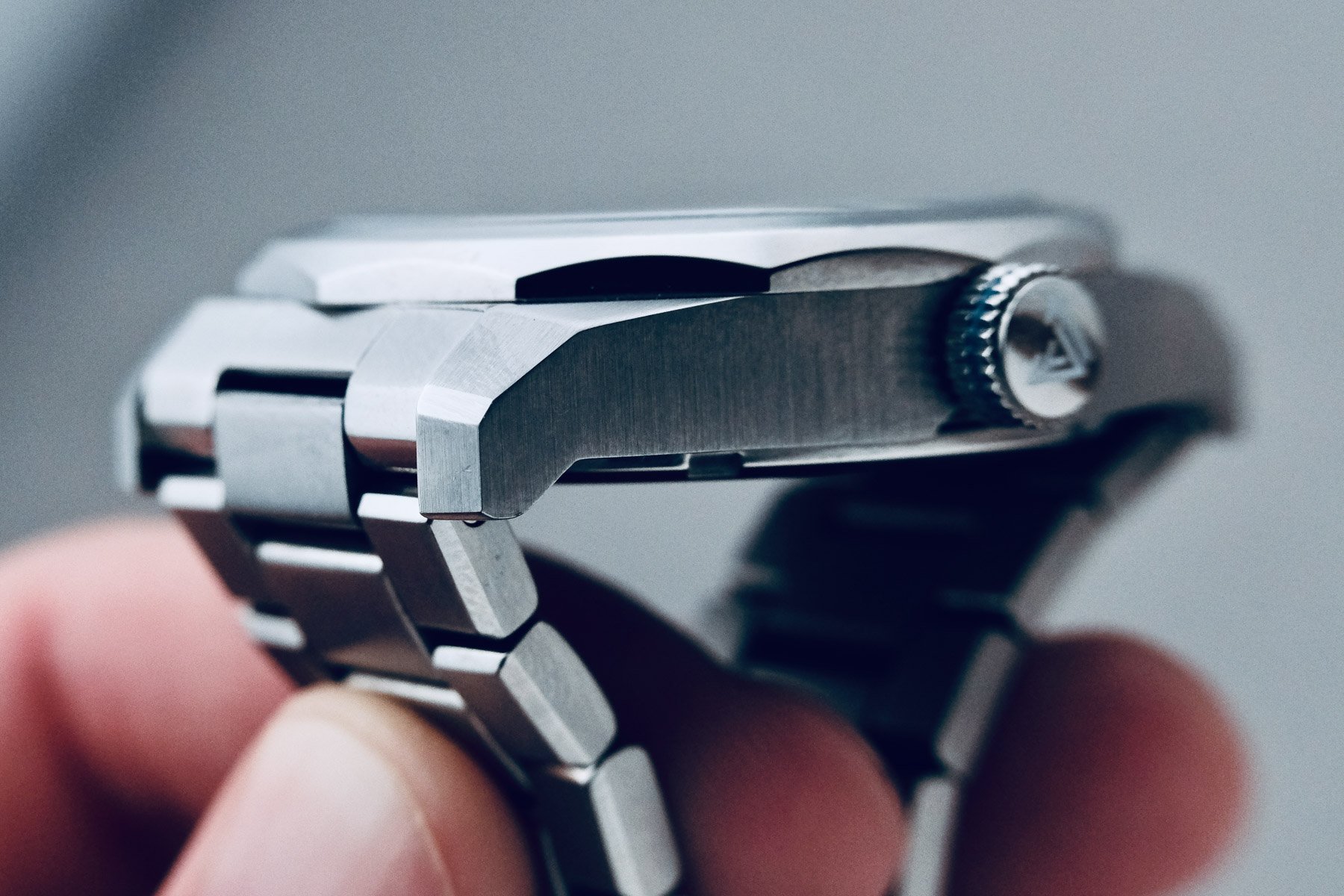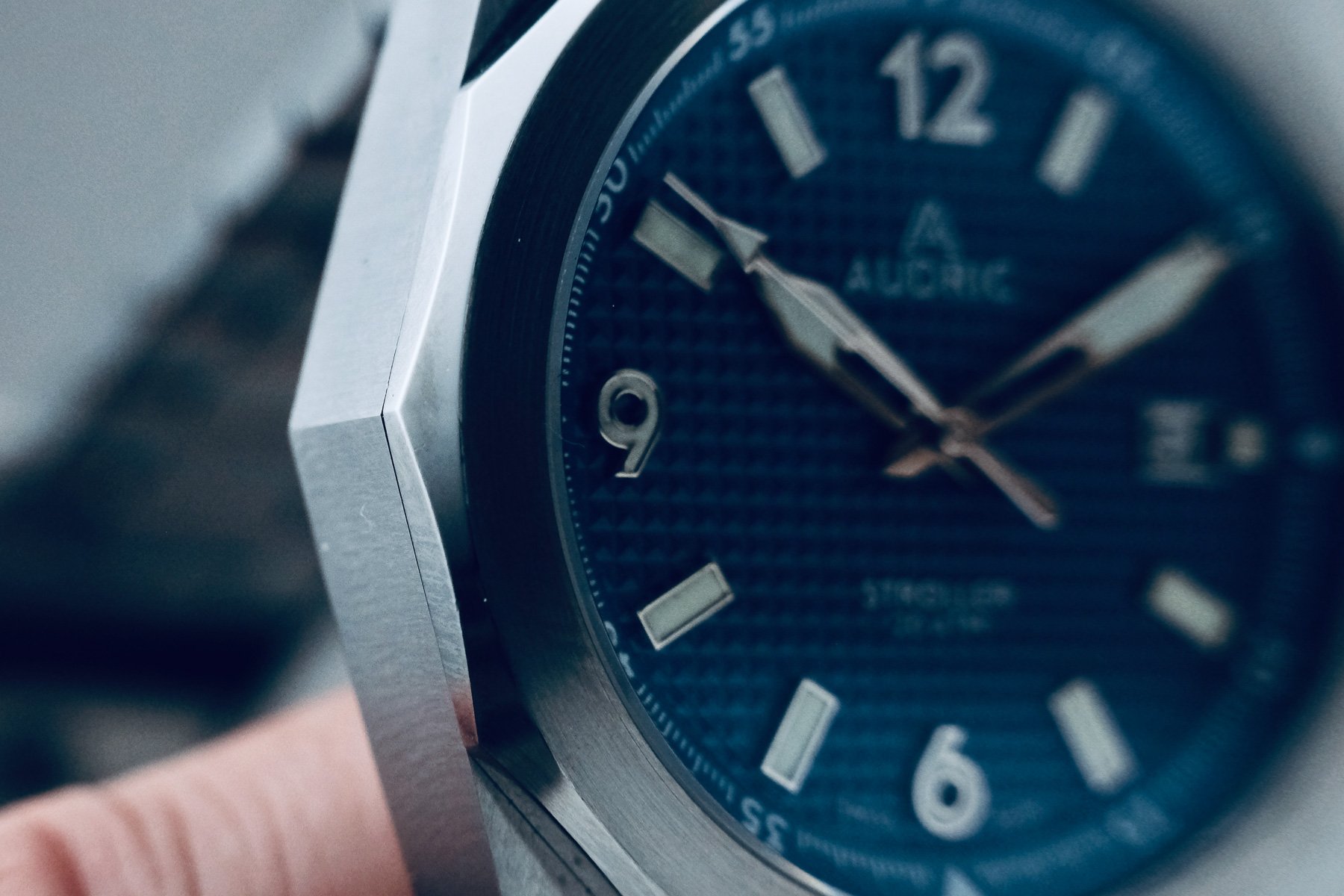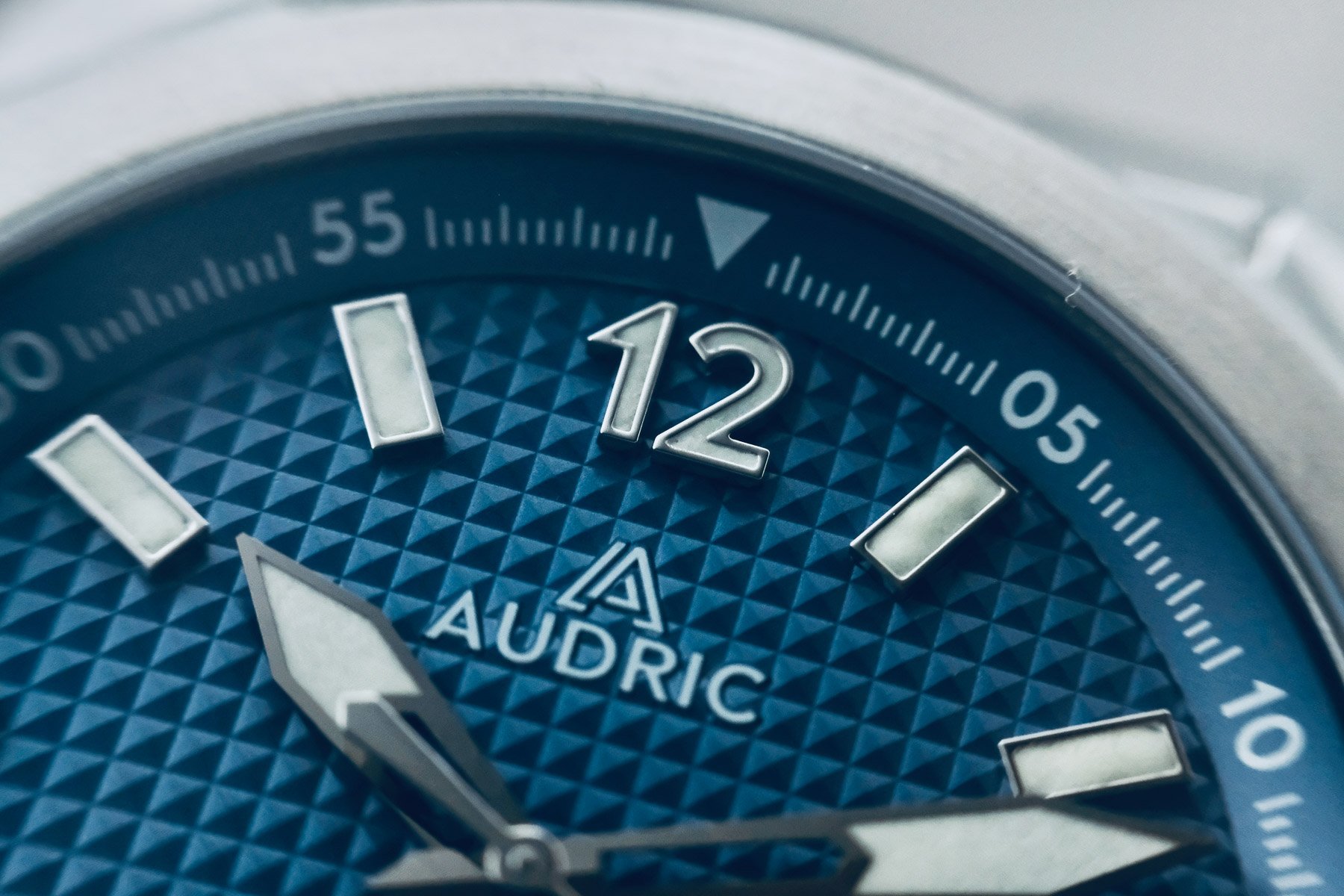Hands-On With The Audric Strider — An Adventure Watch With Sharp Angles
Our taste in watches evolves constantly. One day, we may like dressy watches and the next day, sporty ones. We may prefer large cases that make us feel the watch is sitting confidently on our wrist, or we may get tired of that and opt for smaller, lighter timepieces. I am not immune to changing tastes, and recently, I realized that I naturally gravitate toward fixed-bezel sports watches with angular cases. They just speak to me. I like them for their versatility (fixed bezel), visual interest (the angles on the case), and sturdiness (they generally come with great specs). We must wear what we are attracted to and embrace our changing tastes.
Following my train of thought, I would argue that there is no shortage of sports watches nowadays. We constantly see them from established Swiss and Japanese giants as well as independent brands, big and small. More specifically, we’re seeing an uptick in fixed-bezel sports watches with angular cases, which I mentioned above. Take, for example, the Retter 22 that I recently wrote about or the Straum Opphav that the Fratello community is now familiar with — maybe I should just admit I have something for angular cases. So today, I’m coming back to introduce the newest model from Audric, the Strider. Audric is a Singapore-based brand that Rob wrote about in 2020. I’m glad to be able to talk about its most recent release.
The Audric Strider — It’s all about the angles
Before we begin, I should let you know that the production model of the Strider will look a little different than the prototype I reviewed. First, you may notice the name “Stroller” printed underneath the pinion. This will change to “Strider” — a good move that avoids any baby-carriage imagery. Furthermore, it will receive a more refined finish (it’s actually pretty good as it stands) as well as improved lume. OK, now let’s move on to the case design and, in particular, the angles. I love angular cases (if you haven’t caught that by now) because they make the watch interesting to look at. The Strider comes with heaps of angles on the lugs, bezel, mid-case, and bracelet. There’s a lot to unpack here.
First, a dodecagon (a polygon with 12 sides) sits atop the mid-case and comes with a radial-brushed top section. Note the angles at the 12 and 6 o’clock positions that stick out above the end links of the bracelet and the ones at 3 and 9 o’clock that flow down the case side. The Strider’s case is actually quite symmetrical as the angle at 9 o’clock matches the one at the 3 o’clock position. Generally, cases are not symmetrical in this way as the rightmost side of the case protrudes outward where the crown and sometimes crown guards are. Dramatic angles on the Strider can also be seen at the lugs, which are fat and multi-faceted. Lastly, the bracelet links and end links are multi-faceted as well.
The abnormally wide clasp comes with high-polished chamfers that trail down from the bracelet links. At the end of the day, Audric may have packed too many angles into one watch for you. However, if you are into angular cases like I am, the Strider won’t disappoint on that front!
Dial details
The past few years have seen a resurgence of patterned dials. On the high end of things, Grand Seiko is known for making nature-inspired dials. On the independent side of things, Straum represented Norway’s natural features on the floating portion of the Opphav’s dial. Audric opted for the popular-again hobnail pattern for the Strider. This is slightly reminiscent of the Girard-Perregaux Laureato and is a way to make the dial look interesting without applying a glossy, matte, or sunburst finish. I’m not saying it’s a bad choice. Actually, it’s a smart one. Adding a hobnail dial to a watch endows it with a certain flare that is guaranteed to please the yesteryear-watch collector that you may be.
Looking at the hobnail pattern more closely, we see that it is made of tiny, perfectly shaped pyramids. Light reflects from any one of the four sides depending on how you hold or maneuver the watch. I kinda dig it.
Zooming out a little bit, we will notice thick, applied hour markers. The ones at the 12, 6, and 9 are of the Arabic variant, while the others are in the baton style. It is a time-tested combination that is not original but is darn effective, especially for this type of watch. At 3 o’clock, we see a framed date window that sits alongside a shortened hour marker. The large sword-like hands are half-skeletonized while the seconds hand remains discreet. Lastly, you can find the brand logo at 12 and the model name (which we know will change) at 6 o’clock along with the indication of 20 ATM.
A deeper look at the specifications
The Strider’s case has a diameter of 42mm, a lug-to-lug distance of 48mm, and a thickness of 11.5mm. To be frank, it’s slightly too large for my 16cm (6.25”) wrist. However, it sits flat thanks to the case having a thin vertical profile. The hobnail dial can be seen through a flat piece of sapphire crystal that comes with an anti-reflective coating. Remember the super-angular case? Well, you’ll be happy to know that the angles will be protected from scratches. Indeed, the Strider comes with something called a HexaDori Anti-Scratch coating. It’s akin to Seiko’s DiaShield coating.
Inside the Strider beats the Sellita SW200-1 movement with an élaboré finish and signed rotor that can be admired by way of a see-through case-back. This movement beats at 28,800vph (4Hz) and delivers 38 hours of power reserve. Putting a Sellita SW200-1 in an adventure/tool watch seems common today, and this is for a good reason. It’s a solid movement that is easy to service. Lastly, the oversized crown is easy to grip and comes with two little visual details that I find interesting. First, there is a blue ring on its side that matches the color of the dial. Second, the incised logo is lumed.
Final thoughts
There’s a lot to like about the Strider if you are a fan of watches with angular cases and fixed bezels. While it won’t fit smaller wrists well, you should find the watch comfortable if yours is at least 16.5cm. Regardless of your wrist size, the Strider makes for a great everyday/adventure piece.
The Strider is slated for launch in the near future and will carry a retail price of US$849. If you want to know more, I invite you to visit Audric’s website and sign-up for the newsletter to receive notice when pre-orders open.
I think I’ve bored you enough with my fascination for fixed-bezel watches. I would like to hear from you and your thoughts about the Strider. Please leave your comments below!
















